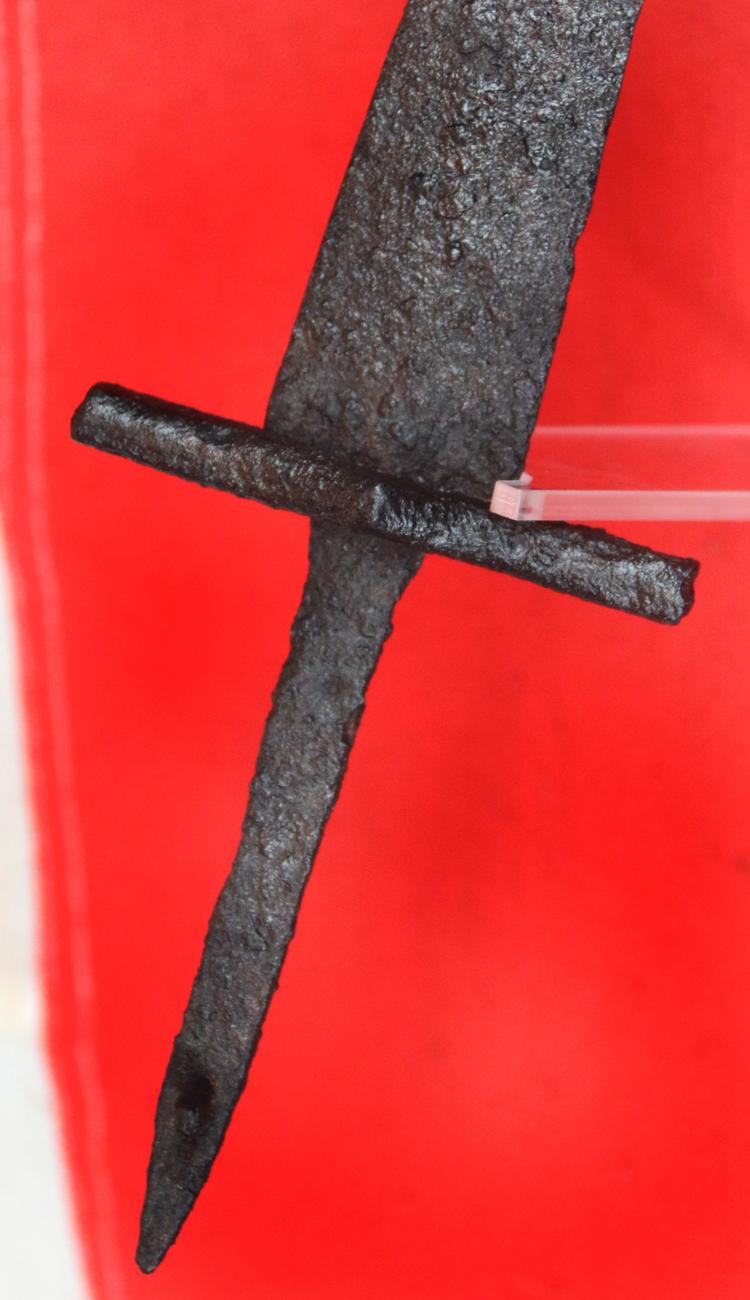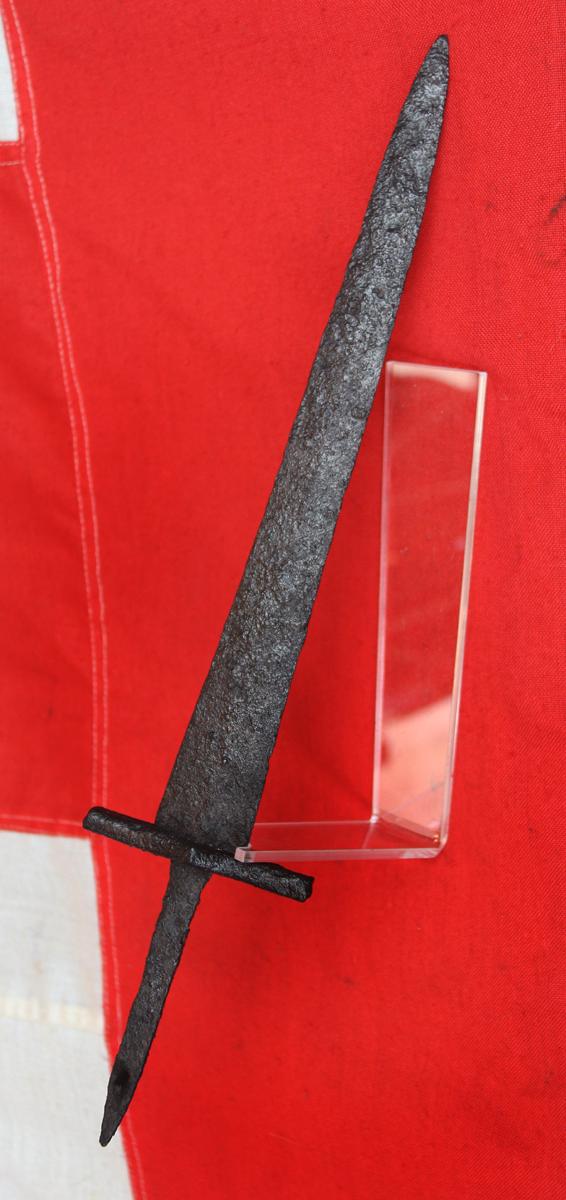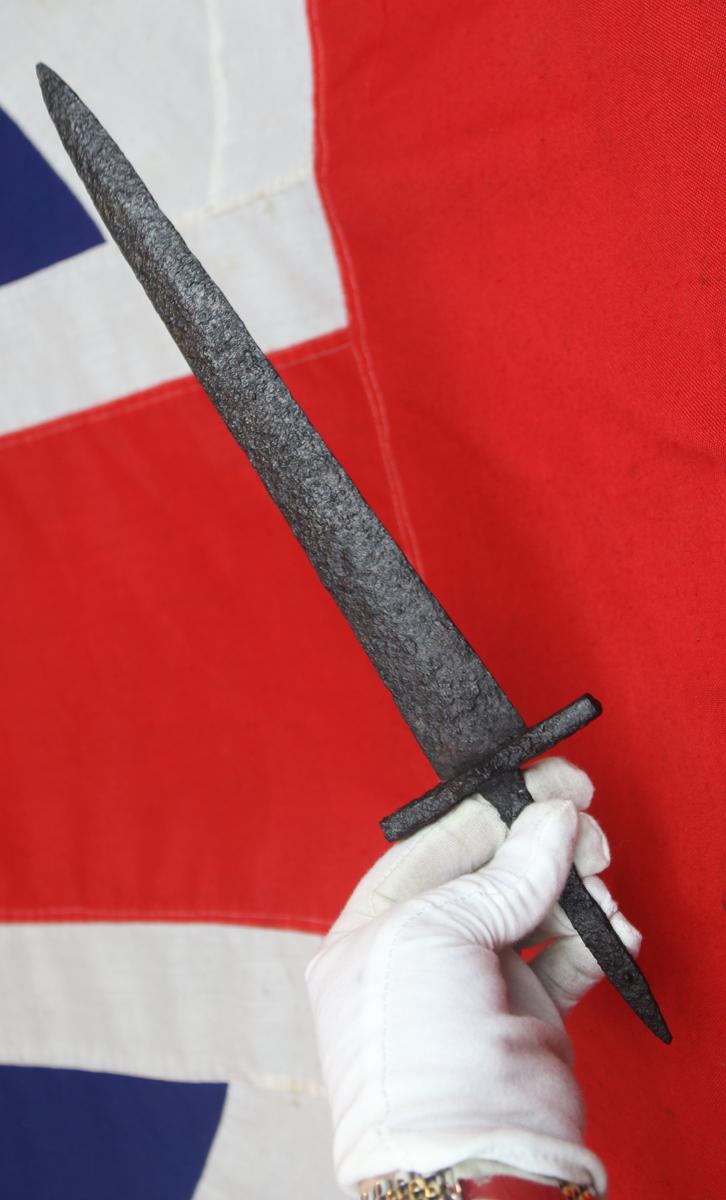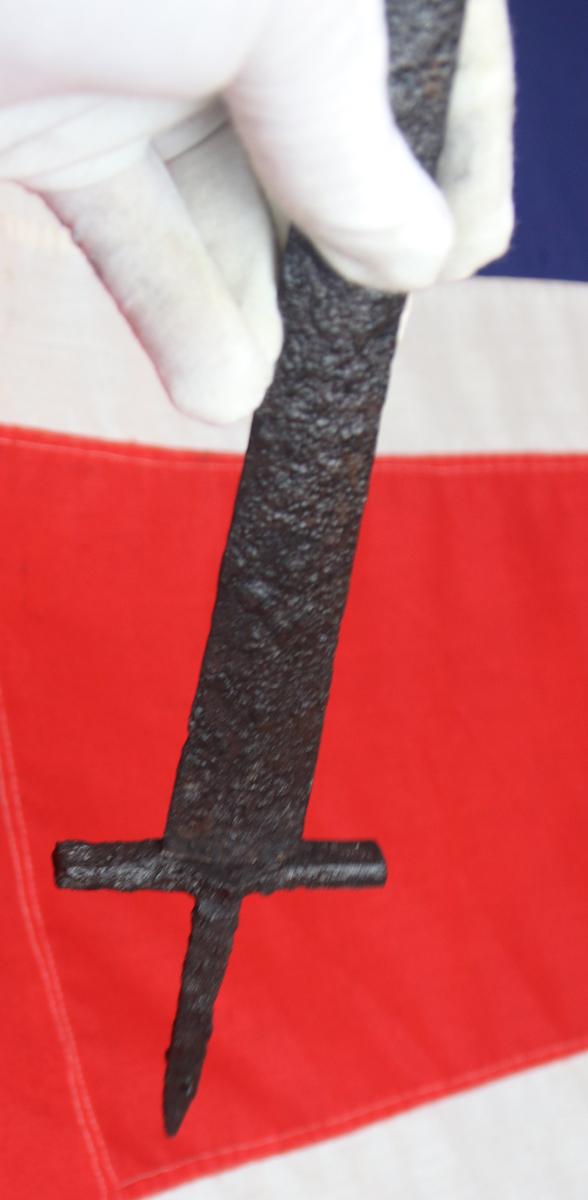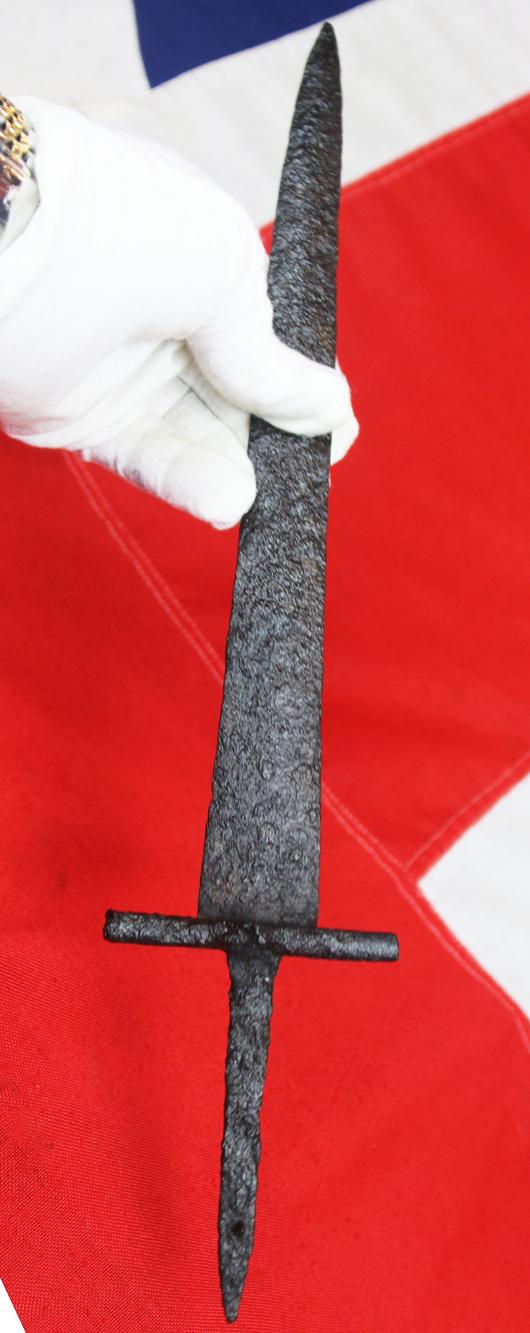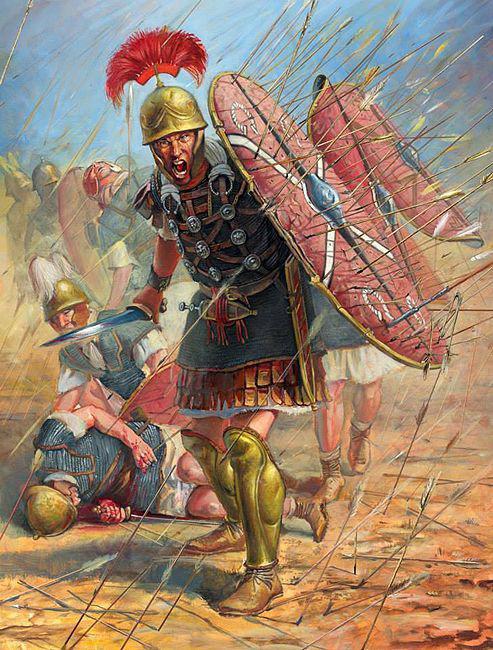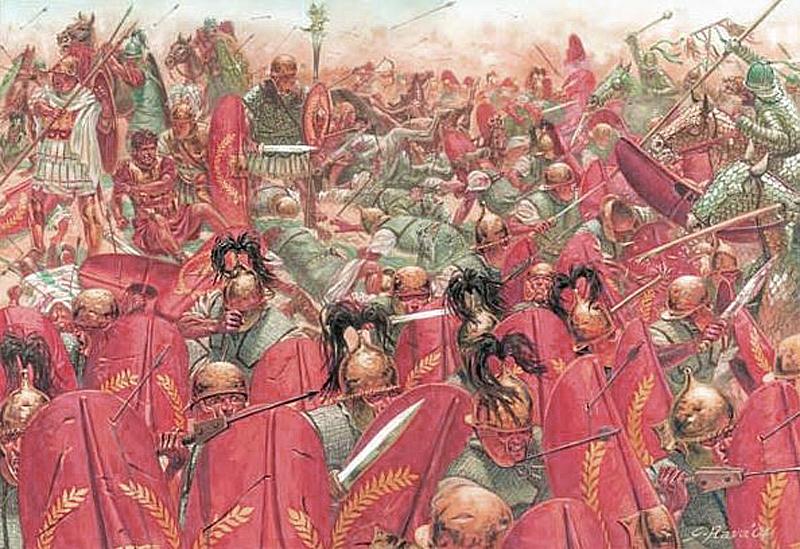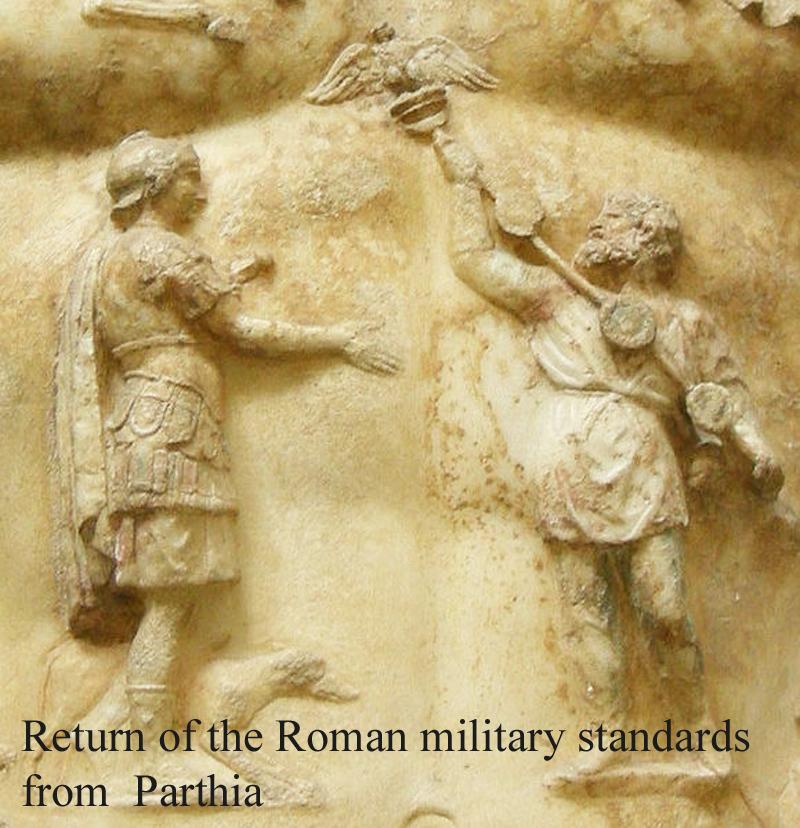A Most Rare, Original, 1st Century Ancient Roman-Parthian Wars Period Dagger with Cross Guard. From The Time of Julius Caeser and Augustus Caeser. Circa 2000 Years Old
An iron double-edged dagger, triangular blade tapering to the sharp tip, quillons and hilt made of iron as well, fastening nail to the hilt, which once would have had organic material grips.
The Roman–Parthian Wars (54 BC – 217 AD) were a series of conflicts between the Parthian Empire and the Roman Republic and Roman Empire. It was the first series of conflicts in what would be 682 years of Roman–Persian Wars.
Battles between the Parthian Empire and the Roman Republic began in 54 BC. This first incursion against Parthia was repulsed, notably at the Battle of Carrhae (53 BC). The Battle of Carrhae (Latin pronunciation: ˈkarrae̯) was fought in 53 BC between the Roman Republic and the Parthian Empire near the ancient town of Carrhae (present-day Harran, Turkey). An invading force of seven legions of Roman heavy infantry under Marcus Licinius Crassus was lured into the desert and decisively defeated by a mixed cavalry army of heavy cataphracts and light horse archers led by the Parthian general Surena. On such flat terrain, the Legion proved to have no viable tactics against the highly-mobile Parthian horsemen, and the slow and vulnerable Roman formations were surrounded, exhausted by constant attacks, and eventually crushed. Crassus was killed along with the majority of his army. It is commonly seen as one of the earliest and most important battles between the Roman and Parthian Empires and one of the most crushing defeats in Roman history. According to the poet Ovid in Book 6 of his poem Fasti, the battle occurred on the 9th day of June.
Crassus, a member of the First Triumvirate and the wealthiest man in Rome, had been enticed by the prospect of military glory and riches and decided to invade Parthia without the official consent of the Senate. Rejecting an offer from the Armenian King Artavasdes II to allow Crassus to invade Parthia via Armenia, Crassus marched his army directly through the deserts of Mesopotamia. His forces clashed with Surena's troops near Carrhae. Surena's cavalry killed or captured most of the Roman soldiers. Crassus himself was killed when truce negotiations turned violent.
His death ended the First Triumvirate. The following four-year period of peace between the remaining two members of the Triumvirate, Julius Caesar and Pompey, argues against the view that Crassus had been a peacekeeper within the group and supports the views of most Roman historians that friction between Crassus and Pompey had always been a greater cause of tension than that between Caesar and Pompey.
During the Roman Liberators' civil war of the 1st Century BC, the Parthians actively supported Brutus and Cassius, invading Syria, and gaining territories in the Levant. However, the conclusion of the second Roman civil war brought a revival of Roman strength in Western Asia.
In 113 AD, the Roman Emperor Trajan made eastern conquests and the defeat of Parthia a strategic priority, and successfully overran the Parthian capital, Ctesiphon, installing Parthamaspates of Parthia as a client ruler. However he was later repulsed from the region by rebellions. Hadrian, Trajan's successor, reversed his predecessor's policy, intending to re-establish the Euphrates as the limit of Roman control. However, in the 2nd century, war over Armenia broke out again in 161, when Vologases IV defeated the Romans there. A Roman counter-attack under Statius Priscus defeated the Parthians in Armenia and installed a favored candidate on the Armenian throne, and an invasion of Mesopotamia culminated in the sack of Ctesiphon in 165.
In 195, another Roman invasion of Mesopotamia began under the Emperor Septimius Severus, who occupied Seleucia and Babylon, however he was unable to take Hatra.
15 3/8 in. Fine condition.
According to Pliny the elder the best steel was made by the Seres and then by the Parthians.
Code: 24260
1650.00 GBP


